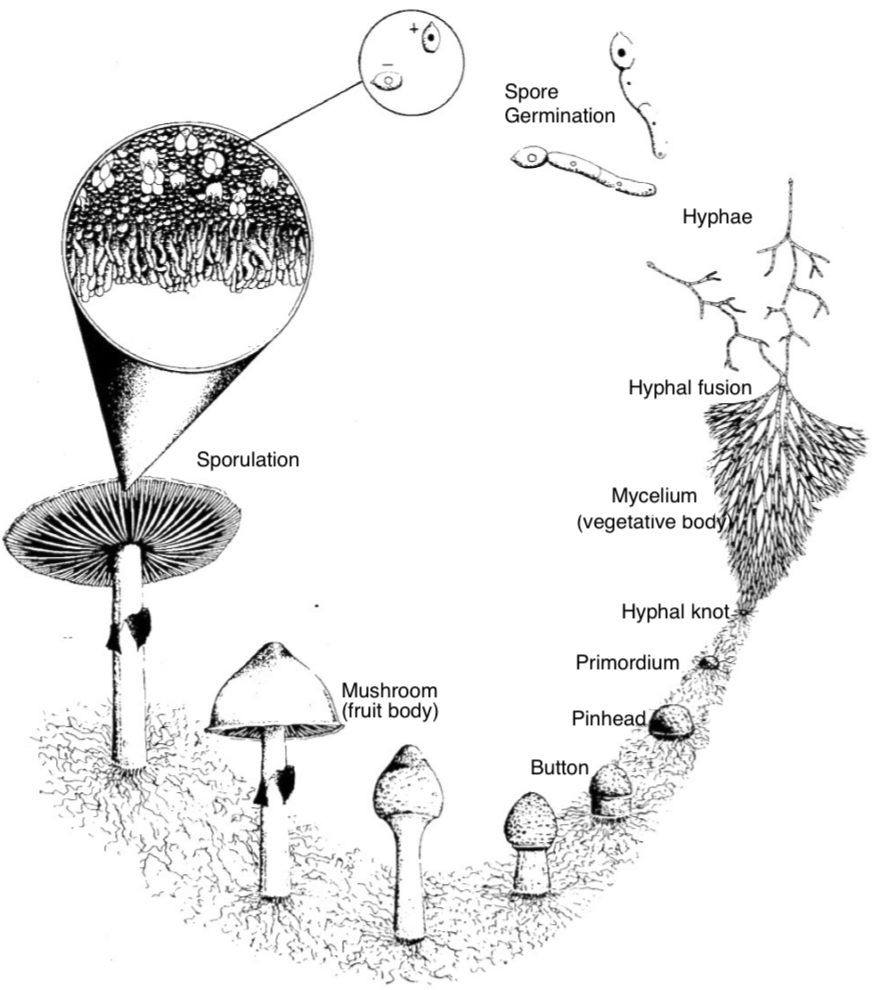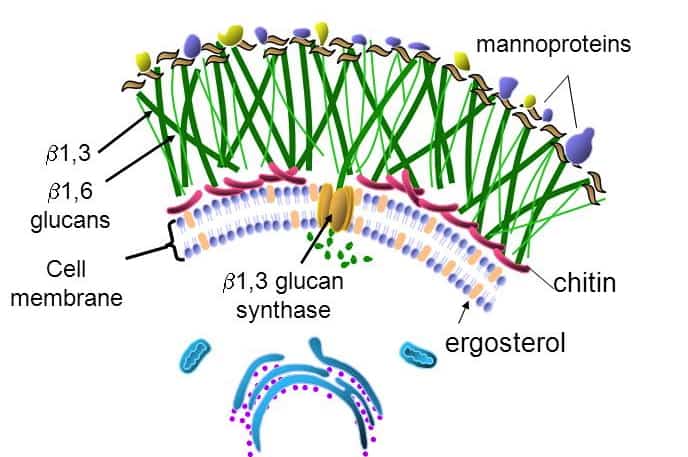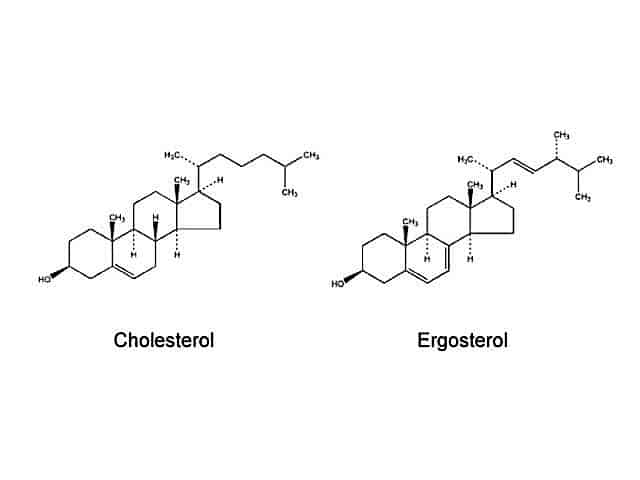Real mushrooms, organically cultivated and naturally grown as nature intended.
Executive Summary
There is significant concern within the regulatory community regarding health claims made about health and wellness products as well as about the identity and purity of the natural products themselves. Functional mushrooms are a category that has experienced high growth but few actual quality control standards. The following White Paper provides an analytical program that enables manufacturers to realize a higher level of product integrity and efficacy.
Essential Active Compounds
Discover the key compounds that define product quality beyond just polysaccharides.
Polysaccharide Numbers Are Outdated
Learn why polysaccharide content alone is an unreliable measure of potency.
Mushrooms vs. U.S.-Produced Mycelium
Understand the fundamental differences between whole mushrooms and mycelium grown in the U.S.
The Nutritional Profile of U.S.-Produced Mycelium
See how its composition is more similar to grain than to a true mushroom.
Extensive Lab Testing
Get insights from test results on nearly 100 samples, revealing the real story behind mushroom-based products.
Spore, Mycelium & Mushroom


Real mushrooms, organically cultivated and naturally grown as nature intended.
Setting a New Standard
Most beta-glucan testing methods have been designed specifically for grains. Grains are (1-4)-beta-glucans so the use of grain-specific tests is not accurate for mushrooms.
Polysaccharide tests are not valid since they also measure alpha-glucans such as starch.
Starch is a very common polysaccharide that is present in large amounts in staple foods such as potatoes, most grains, corn, and rice. The presence of these starchy materials in a mushroom product will elevate a polysaccharide test and give a false positive for the basidiomycete beta-D-glucans. For this reason it is important to use a test method that is specific to mushroom beta-glucans and will not pick up these alpha-glucans.
The Most Widely Researched Active Compound
A new testing method designed for beta-D-glucans in mushrooms and yeast has been developed in 2004 by a company called Megazyme Ireland International. The Megazyme test method has been utilized by the USDA for the testing of mushroom beta-glucans.
This test detects and quantifies soluble and insoluble (1-3),(1-6)-beta-glucans. Using the Megazyme test we can test all basidiomycete products, whether they are mushroom powders, extract powders, or mycelium powders.
Three different reishi mushroom cultivars have very consistent levels of beta-glucans and less than 1% starch. All commercial mycelium on grain samples had approximately 10% or less of beta-glucans and in some cases only 1%. Starch levels are consistent with the excess grain substrate.
| Basidiomycete Part | Beta-glucan | Starch |
|---|---|---|
| Blended Mycelium Products | ||
| 5 Mycelium blend | 15.26% | 27.81% |
| 7 Mycelium blend | 3.42% | 41.93% |
| 16 mycelium blend | 3.2% | 66.4% |
| Whole Chaga Mushroom | 6.79% | 1.05% |
| Chaga mycelium | 4.18% | 28.22% |
| Chaga mycelium | 7.36% | 44.14% |
| Whole Cordyceps militaris mushroom | 34.36% | 1.65% |
| Cordyceps mycelium | 1.5% | 64% |
| Cordyceps mycelium Cs4 | 7.58% | 1.71% |
| Whole Maitake mushroom | 32.4% | 1.6% |
| Maitake mycelium | 3.46% | 39.91% |
| Maitake mycelium | 6.38% | 44.47% |
| Whole Oyster mushroom | 35% | 0.9% |
| Whole Reishi mushroom | 28.1% | 0.1% |
| Reishi mycelium | 1.06% | 51.44% |
| Reishi mycelium | 7.3% | 45.2% |
| Whole Shiitake mushroom | 28.2% | 0.7% |
| Shiitake mycelium | 7.20% | 38.88% |
| Whole Trametes mushroom | 49.3% | 0.1% |
| Trametes mycelium | 6.70% | 24.55% |
| Trametes mycelium | 9.06% | 44.78% |
The above charts demonstrate:
Mushrooms contain only minor amounts of starch, on average less than 3% of the dry weight. On average, mycelium products on grain contained 35-40% starch. This reveals that the grain is not converted into fungal tissue.
Grains, Fillers & Excipients
The presence of starch in health products, especially as a carrier for extract ingredients, has been an ongoing industry issue.
Basidiomycete mycelium products present a similar issue since many are grown on grains. Starch testing is a way to discover the amount of grain residue present in grain based mycelium, since the grain is not separated from the mycelium in the final product.
As you can see in Figure 1 and 2 above, starch is high in mycelium products, which confirms our assumptions. In fact, starch testing will determine how much of a mycelium product is actually mycelium and how much is grain. It will also identify starch carriers used in mushroom extracts.
A second category of extensively researched active compounds in basidiomycetes are lipids known as triterpenoids.
Triterpenoids occur in significant amounts in a few important species, those being reishi, chaga, and Antrodia. Although reishi and chaga have some common classes of triterpenoid compounds, one still must procure a pure standard in order to accurately measure the quantity of these compounds.
Today ganoderic acid standards for reishi are available. Nammex has been utilizing an HPLC method developed from reishi research and has 15 years of testing experience. We have also developed an HPLC method for testing chaga triterpenoids. From HPLC testing, we can confirm the following:
This is consistent with our historical record of triterpenoid testing dating back to 1994. This confirms the basic tenet that without precursor compounds, which primarily occur in natural substrates, important secondary metabolites are not produced in meaningful quantities.

A Measure of Fungal Material
These tests have established that mushrooms are truly the most important beneficial part of the basidiomycete.
Mushrooms are consistently high in beta-glucans and low in starch. The chitins and other cell-wall compounds add to their activity, especially as prebiotic fiber. Mushrooms also produce secondary metabolites in measurable quantities, such as the ganoderic acids in reishi mushroom and the triterpenoids in chaga and Antrodia.
Mushrooms are produced on natural substrates and generally in natural conditions of temperature, light and humidity. The natural substrates are generally similar if
not the same as what these mushrooms would grow on in the wild. The cultivation of mushrooms on nutritious natural substrates produces a natural product that is perfectly in tune with end users who desire whole herb, organic, and naturally grown ingredients.
Mushrooms are the true “full spectrum” stage of the basidiomycete organism.
This analytical program provides a means for manufacturers to upgrade their product offerings and be confident that the labeling and contents of the product meets the high standards that they have set for their brand.
Essential Active Compounds
Discover the key compounds that define product quality beyond just polysaccharides.
Polysaccharide Numbers Are Outdated
Learn why polysaccharide content alone is an unreliable measure of potency.
Mushrooms vs. U.S.-Produced Mycelium
Understand the fundamental differences between whole mushrooms and mycelium grown in the U.S.
The Nutritional Profile of U.S.-Produced Mycelium
See how its composition is more similar to grain than to a true mushroom.
Extensive Lab Testing
Get insights from test results on nearly 100 samples, revealing the real story behind mushroom-based products.